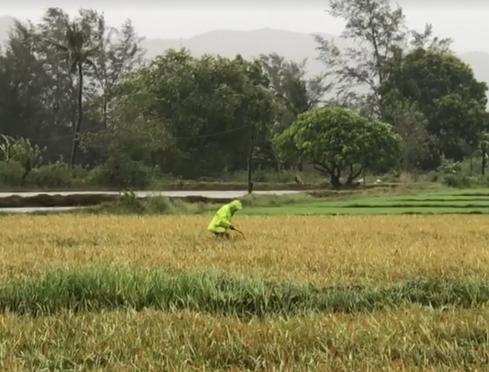NFA Council raises palay buying price

The National Food Authority (NFA) Council has increased its procurement price per kilogram of palay in a bid to boost the agency’s buffer stock and make it more competitive in the market just a few weeks before the dry harvest season comes to a close.
At a press briefing on Thursday, Department of Agriculture (DA) Assistant Secretary and spokesperson Arnel de Mesa announced that the NFA Council approved the new buying prices for dry and clean and fresh palay.
De Mesa said the new buying price for dry and clean palay ranges between P23 to P30 per kilo from the previous P19 to P23 per kilo, while for fresh palay the procurement price range was upgraded to P17 to P23 per kilo from P16 to P19 per kilo.
He said the NFA could only buy so much palay as traders are buying stocks from farmers at higher prices.
“Ang nabibili ng NFA ngayon ay talagang kakaunti (Currently, the NFA can only buy few stocks),” De Mesa said.
The DA official said that the national farm-gate price average stands at P26.9 per kilo, while the NFA’s buying price was only at a maximum of P23 per kilo.
“Talagang wala siyang mabibili or very minimal so tinaasan nang kaunti para makahabol ang NFA doon sa presyo na ino-offer ng traders sa ngayon,” added de Mesa.
(It can only buy a few; that's why we had to increase the buying price so NFA can compete with the price being offered by traders.)
In its February 2024 report, the NFA said it procured 12,378 bags of palay, or the equivalent to 618.9 metric tons (MT) of the grain, during the month.
This was a measly 2.28% of the grains agency’s target of 542,800 bags or 27,140 MT of palay for the period.
“Decrease in procurement is due to lesser palay harvest, since February is not a harvest season hence the procured palay is just a spill over of the last cropping season,” the NFA said in its report.
Buying price
NFA Officer-in-Charge Administrator Larry Lacson said that the agency is facing difficulties in procuring palay during the harvest, noting that traders are outbidding them by buying the grain at higher prices than it offers.
Lacson also expressed confidence that with the adjusted palay buying price ranges, the NFA can increase its buffer stock in time for the tail end of the harvest season.
“With this price range given to us by the Council, we are confident that in areas where harvesting is still ongoing we can procure many,” the NFA chief said.
"Hindi ibig sabihin 'yung highest range agad 'yung ating buying price. Imo-monitor natin lahat ng buying price nationwide. There is no uniform price na kamukha dati," he said.
Lacson said that the NFA’s buying price of palay will be different “on a per province basis” as the agency will seek to make a competing offer based on the prevailing farm gate price in each province.
“We will issue a price bulletin for each province,” the NFA chief said.
Looking to buy more
In a separate statement, Agriculture Secretary Francisco Tiu Laurel Jr. said the NFA’s rice stocks remain sufficient as it is looking to buy more before the end of the harvest season ends in May.
“At our current buying price, we cannot compete with private traders. And we only have three weeks before the harvest season ends,” said Tiu Laurel, adding that “we need to ensure that our farmers make money to encourage them to continue planting and even expand the area planted to rice.”
Under the Rice Tariffication Law, the NFA is tasked to maintain a national rice buffer stock equivalent to at least nine days consumption, which now stands at 330,000 metric tons, to cover requirements in times of disasters and other calamities.
The law does not allow NFA to import rice or trade in agricultural commodities, and requires it to source its buffer stock from local rice farmers.
Meanwhile, Tiu Laurel said the NFA Council also approved guidelines for the disposition of aging buffer stocks, giving priority to government agency such as the Department of Social Welfare and Development (DSWD) and the Bureau of Jail Management and Penology (BJMP), and those left to be sold to the private sector through an auction using price based on data from the Philippine Statistics Authority (PSA).
De Mesa said excess supply will be auctioned at discounted prices. For stocks below six months, price will be 20% lower than the PSA-monitored price of well-milled rice. Meanwhile, stocks over six months will be auctioned at 30% lower than the PSA's reported rate. — VAL/RF/VDV, GMA Integrated News




